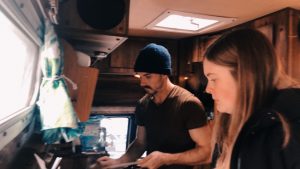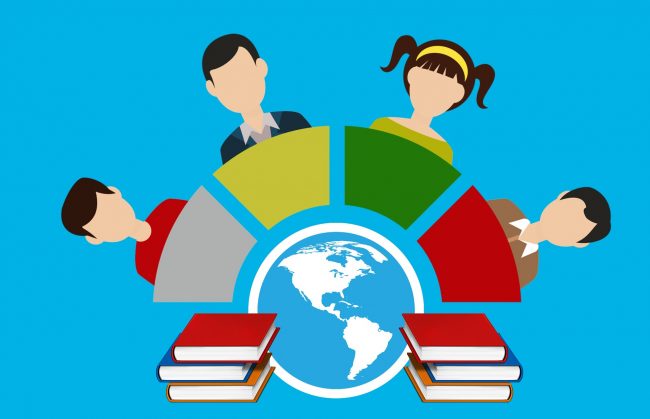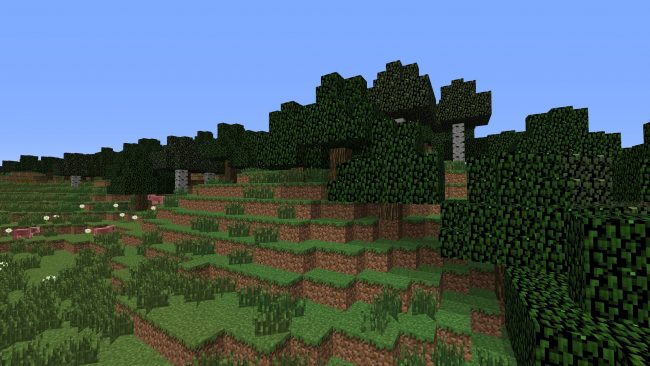Category: Communication
Video conferencing, Synchronous vs. Asynchronous, etc.
Video Conferencing
Today we learned about video conferencing, accessibility, and modality.
Video Conferencing increases accessibility. Students who are unable to attend a physical class, whethere its because of location, disability, or mental health, students can attend class through video conferencing.
We considered a variety of questions through this session:
Why do we need to have required face-to-face experience as a class?
Should an instructor’s preference override student accessibility? Or student preference of modality?
Does/should modality bias exist?
Should we allow flexibility in modality accessibility? What are the implications?
Jess and I worked together on these questions through discussion, and she posted our answers on her twitter page.
How teachers design instruction and allow flexibility affects the levels of our students’ engagement. There tends to be a binary way of thinking in terms of modality: face-to-face or online. Researchers and instructors are working on changing this way of thinking. The more flexible an instructor is with their presentation of information and student access, the better and more accessible their instruction is. “Blended” instruction is a dead term. There is no increased access to learning afforded by blended learning and blended can not meet mobility needs.
Teachers carry bias when entering the field in terms of modality, whether they intend to or not. It is important that teachers are aware of these biases, and work to break them down and extend past their comfort zone in order to accommodate all of their learners. Once teachers provide freedom, location is no longer important or an obstacle. I have been fairly biased in terms of face-to-face instruction, as I have tried online coursework, and it was not effective for my learning. I have come to realize how allowing more flexible modalities and different points of access will directly impact the inclusiveness and acceptance within my classroom community.
I have linked some examples of successful Video conferencing and alternatives to face-to-face instruction, and places for further research.
Tech Inquiry – CAI Benefits and Challenges
Today Jessica, Jess, Madi, and I presented our research. We created a source for our class that they are able to access here.
Before putting the research together, I looked into the benefits and challenges of Computer-Assisted Instructions. CAI allows for self-paced learning. Learners can move as slowly or as quickly as they like through a program; they can repeat some task or review material, as well as skip over topics if the information is already known, making the learning process more efficient. CAI is also self-directed. Learners can decide what they want to learn and in what order they want to learn it. Every student has a different learning style and uses different strategies. When learners can use strategies that suit them, and improvements in the effectiveness of the learning process normally ensue. When students are able to direct their own learning motivation is increased and their autonomy in their learning strengthens. CAI exercises various senses; humans are multi-sensory animals and the more senses through which we receive information, the easier it is to remember class material. Computers have the ability to exercise various senses and present information in a variety of ways.
There are also a few challenges of CAI that I came across. Computer programs can be overwhelming for students. They are left on their own with information and recourses available, and if not properly guided through the programs, they can become overwhelmed. There is also a tendency to use multimedia “gimmicks”. Teachers need to pay attention to current theories and resources, and ensure that they are benefiting their learners, and not just acting as a distraction. Meaningful multimedia practices are possible, but more work. In addition, malfunctioning equipment can waste time and become frustrating for both teachers and students, leading them to give up faster.
Macaroni Moments with Maxie and David
Today Maxie and I went over to David’s van and made some Macaroni and Cheese. We used my all-time favourite recipe for Mac and Cheese, my Granny’s recipe. Her mac n cheese uses sharp cheddar and has a bit of a tang to it, and I love that about it.

Here is the recipe we used:
- 1/4 cup butter
- 1 tsp salt
- 2 cups old cheddar, grated
- 2 cups macaroni
- 1/4 cup flour
- 2 1/4 cups milk
- 1 TBSP Imperial Cheese
- soda crackers
The recipe calls for a microwave to melt the cheese and mix the butter, but given that we were in the van, we heated and mixed everything on the stove. Place butter, flour and salt in a pot and heat until butter is melted. Add milk and stir until sauce becomes thick (took about 5 minutes). Mix in cheddar and imperial cheese until melted. While making the cheese sauce, cook 2 cups of macaroni for 8-10 minutes and drain. When done, add drained macaroni and cheese sauce into a casserole dish. Top with crushed soda crackers. Bake at 350 for 20-30 minutes, or until crackers are golden and cheese is bubbly.

Cooking with friends definitely added an element of fun to the cooking process. We worked together to measure, stir, and add ingredients and did crosswords while we waited. I had a marvellous time making my Grans Mac n Cheese, and would definitely want to cook in David’s Van again!

Minecraft is Awesome!
Today we had a teacher and students from Colquitz and Spectrum school, where we were taught all about the Microsoft owned program, Minecraft. Minecraft is an incredible platform for both teachers and students to help them dive into different subject matters, make connections, and change pedagogy. There is an edition of Minecraft called Minecraftedu that allows students and teachers to access the program and change modes from tutorial to survival. In Minecraftedu teachers have the ability to change the settings and modes. They can adjust how and if students communicate, what resources are available to them, difficulty, controls, and so much more. The teacher also has the ability to relocate students within the game, have private conversations with them, and help students stay on task and focus. The students that came into our classroom were unbelievably excited and full of knowledge about the program and ways that it could be used. When playing the game in our class, peers were constantly talking, helping each other out, and learning from one another, leading to the building of rapport, communication skills, and bonding opportunities. The teacher discussed how she had learned a plethora of skills from her students while incorporating Minecraft within lessons. One of the most interesting skills she learned was instead of blurting out resources and instructions for students, she allowed them to play around with the crafting tables. If the students try out different options for themselves, they are more likely to retain the information they have learned and struggle less with resources in the future. The tutorial mode is structured more by the teachers and implements teamwork, ideas of career decisions, and different subject matters.
Integrating Minecraft into the classroom allows students to understand what career path they may want to go down. One of the students discovered that he is interested in becoming an architect, and another student loved the amount of creative freedom she had and was steered towards the arts. Minecraft is also beneficial in building community within the school. If teachers hold Minecraft at lunch and recess, students are interested can join and meet other students with similar interests. This creates a safe space for students where they can connect and build a community. Students can also work together online while in different locations. One of the students had used Discord and Skype in order to walk through what they had created on Minecraft and explain why and how they connected to the curriculum. If there is a particular set of skills and instructions the teacher wants the students to achieve, she hands out papers with checklists to help students reflect. This allows students to see their development, use metacognition, and understand how successful they were. The lesson held on Minecraft has taught me that teachers need to have an open mind and be willing to change and build on their pedagogy in order to interact with students and their interests. Teachers don’t have to be experts in order to use Minecraft with their students, they need to enter the class with an open mind and a willingness to learn from their students.



